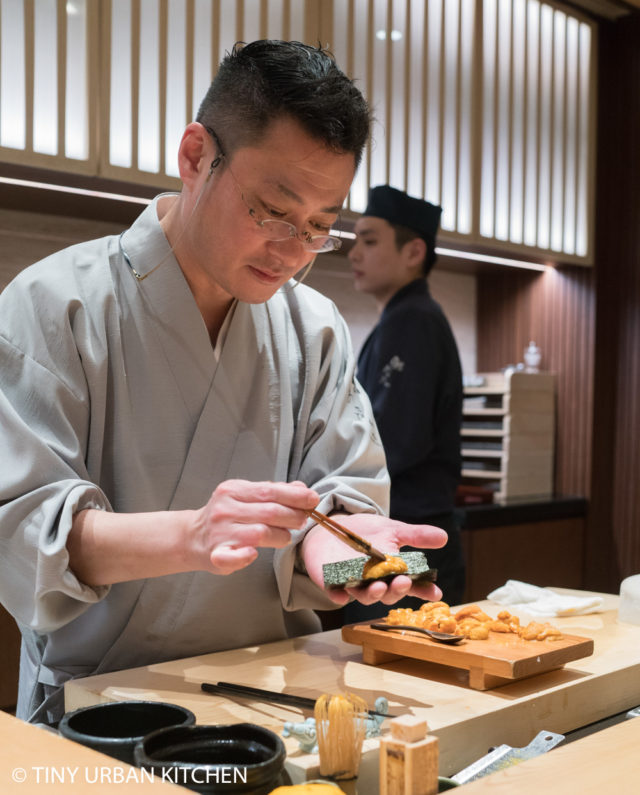
I have been intrigued to try Sushi Masataka for some time now for several reasons. One, very trusted sources indicated that this restaurant was fantastic, arguably one of the best sushi places in Hong Kong. Second, Sushi Masataka Hong Kong (previously Rozan) has received significant accolades, such as being featured on numerous "best sushi" lists as well as having a Michelin Plate. Finally, it is literally just steps away from our apartment. We knew we would eventually try it, just to find out what our "neighborhood" sushi restaurant was all about.
Sushi Masataka Hong Kong is part of The Lai Sun Dining Group, a powerhouse dining group behind exclusive Michelin-decorated restaurants such as 8 ½ Otto e Mezzo, China Tang, and Kaiseki Den by Saotome.
The restaurant re-opened in 2018, changing its name from Rozan to Sushi Masataka to reflect and represent the chef behind the food - Chef Masataka himself.
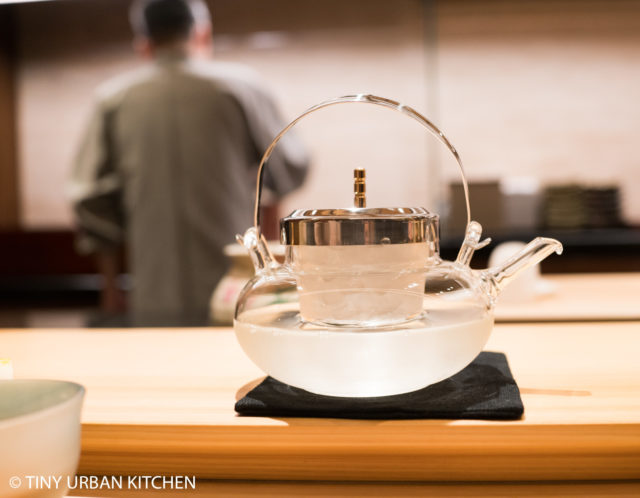
The restaurant has an impressive sake list. Since we are not really sake connoisseurs, we were happy to ask the chef to recommend us a good bottle that was suitable for pairing with sushi.
Chef's Omakase 18 pieces
Though many will say that Chef Masataka's style is "Edomae", we found that he was definitely more creative and broke from the strict rules that typically define a truly traditional edomae sushi experience (trust us, we have eaten at more than our fair share of that type in both Tokyo and Hong Kong).
For instance, most edomae sushi meals start with a series of appetizers and sashimi before moving onto nigiri sushi. Usually, these meals end with a few sweeter "dessert-like" nigiri (such as anago), ending with tamago, a maki roll, and miso soup.
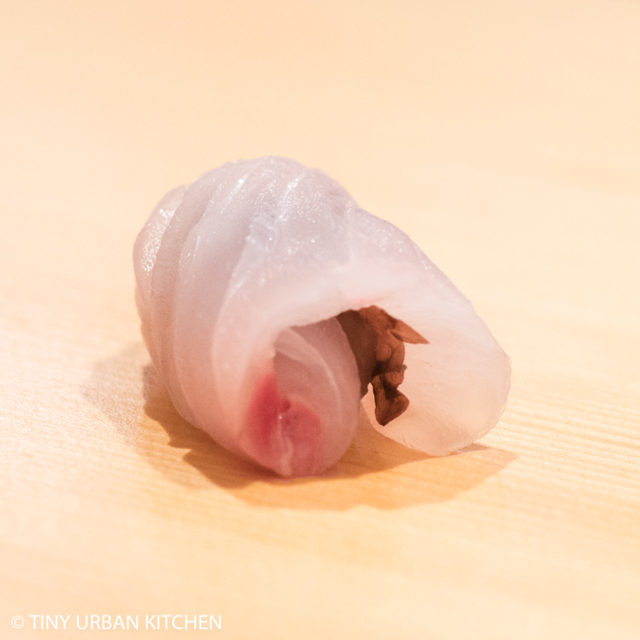
Kuromutsu (Japanese bluefish),
shiso, chili sauce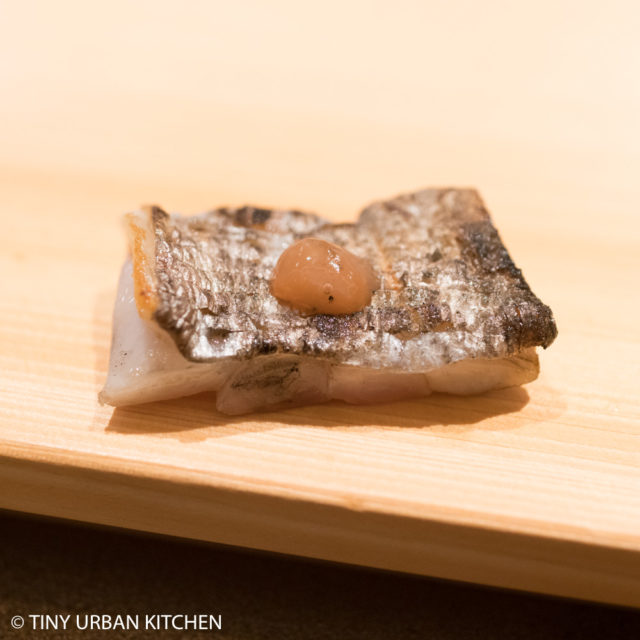
Barracuda with plum sauce 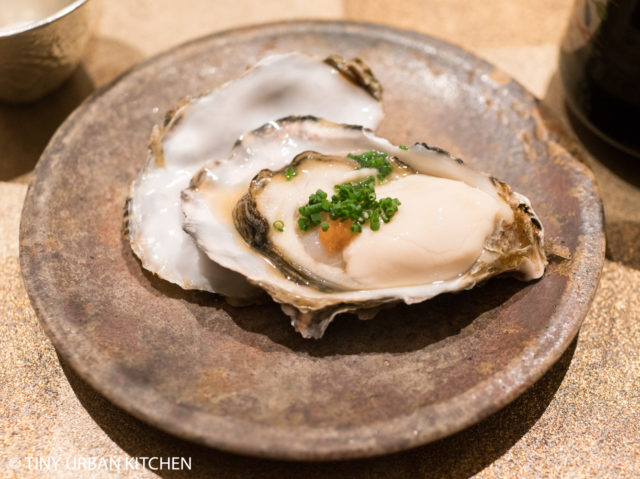
Hokkaido oyster 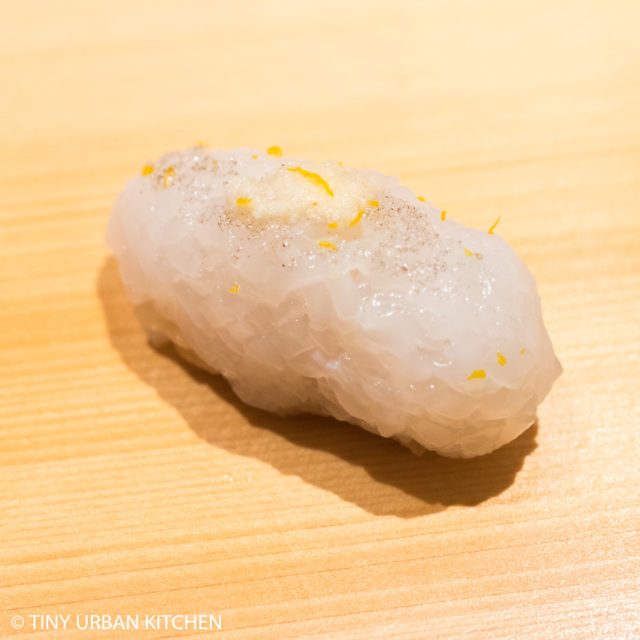
Sumi-ika (golden cuttlefish)
At Sushi Masataka, the meal started out traditionally, with some delicious bites: kuromutsu rolled up with shiso and chili sauce, a lightly grilled barracuda with plum sauce, and a luscious Hokkaido oyster. This is quite typical. However, it was the introduction of a piece of sumiyaki nigiri sprinkled with ginger, salt, yuzu zest, lime juice, that caught us off guard.
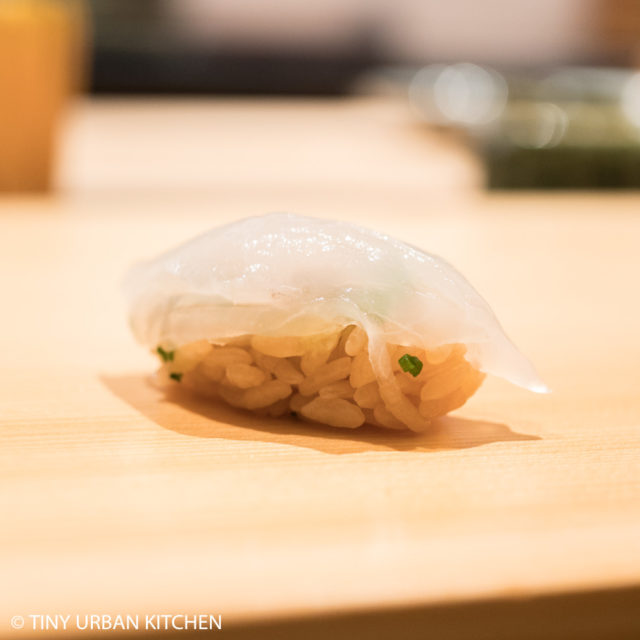
kawahagi fish liver + shiso 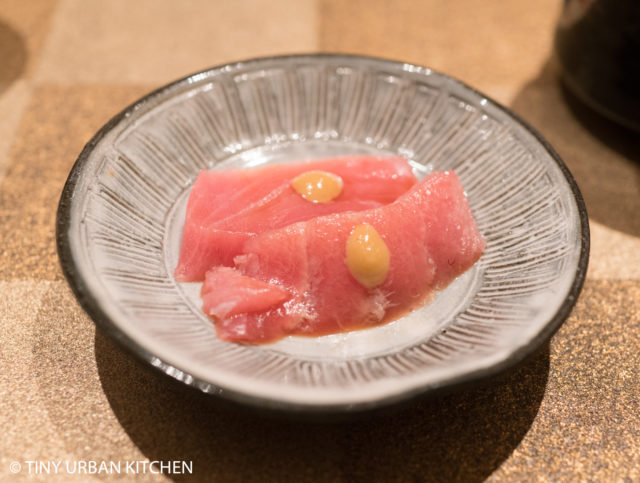
chutoro 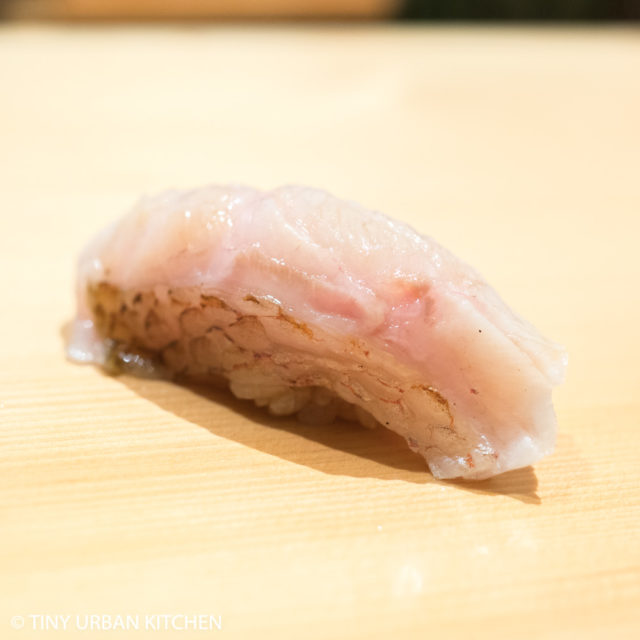
akamutsu (rosy seabass) 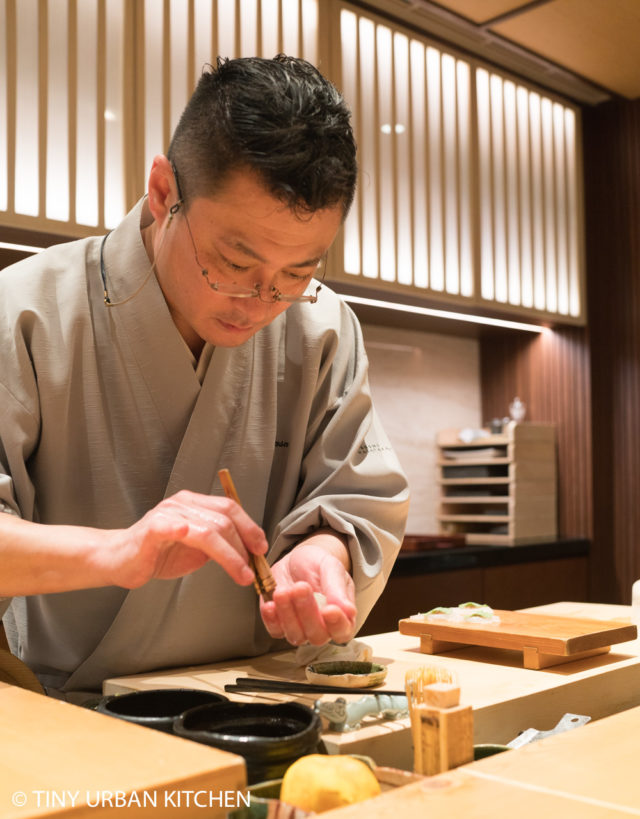
Additional nigiri pieces followed, like a beautiful kawahagi and akamutsu (one of my favorites!). This was interspersed with chutoro sashimi (served with yellow mustard, and unusual twist), and followed by delicious bites of Kyushuu abalone (with liver sauce!). Though it was tasty, it still didn't compare to the version at Sushi Shikon or Yoshitake, still the best on the planet.
We continued with a few traditional pieces of nigiri, kinmedai (with seaweed and mountain yam) and a fantastic shirako lightly cooked with salt and black pepper. I don't typically love shirako, but I really enjoyed this preparation and I think it's one of my favorites renditions thus far.
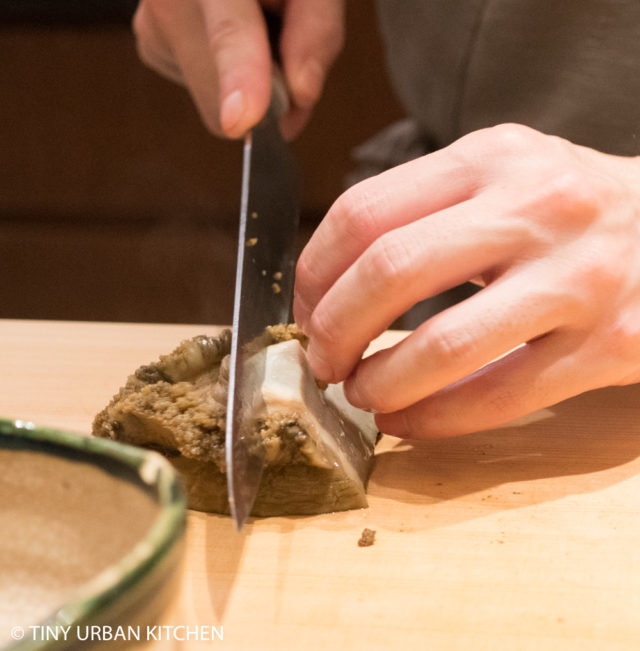
Kyushuu abalone 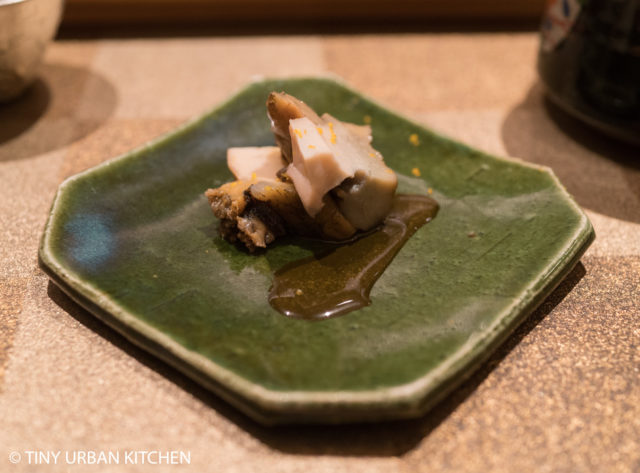
with abalone liver sauce 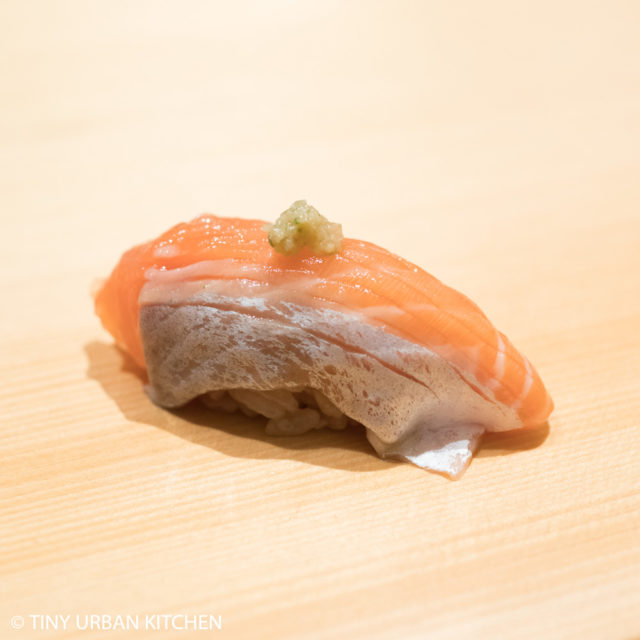
sakuramasu (ocean trout) 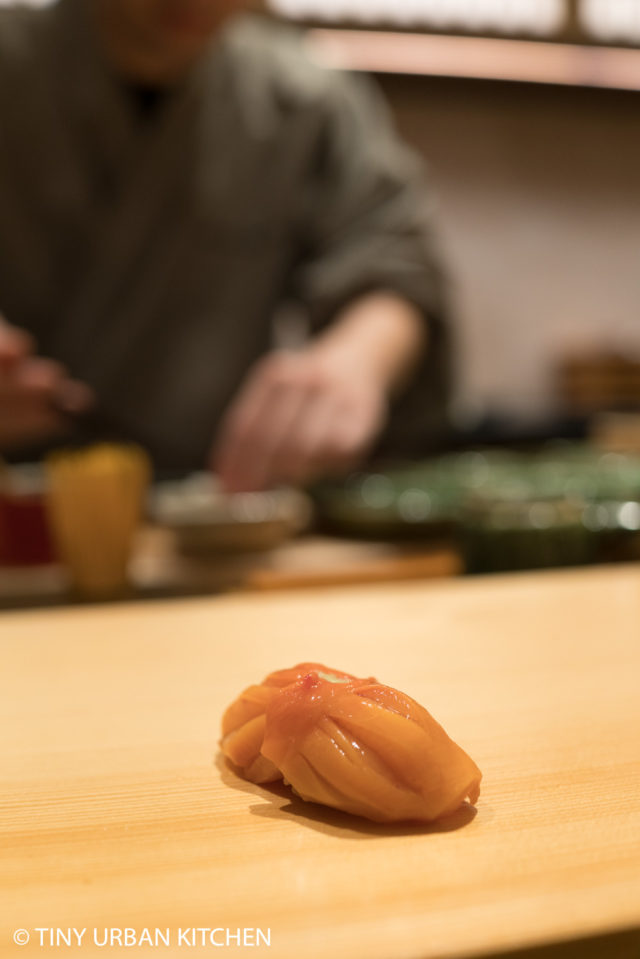
akagai 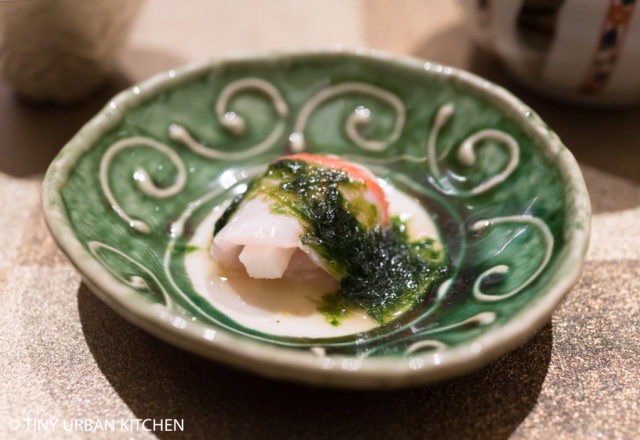
kinmedai 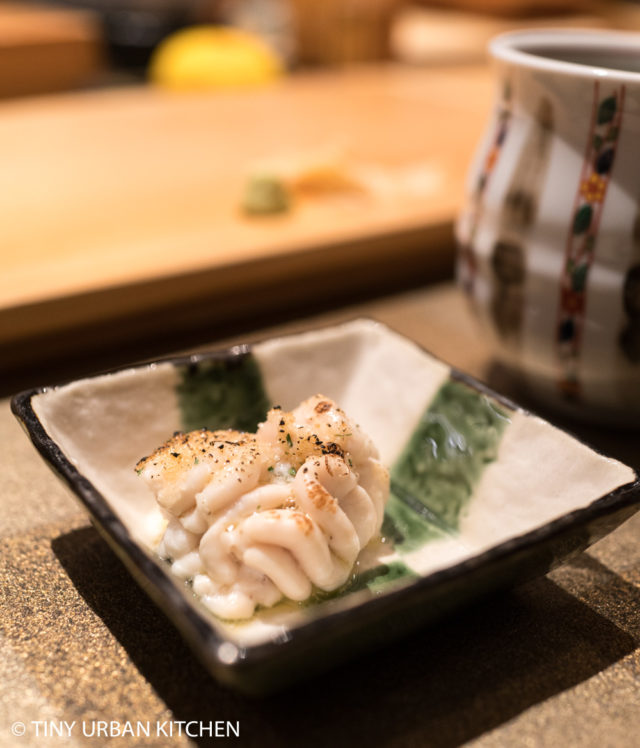
shirako 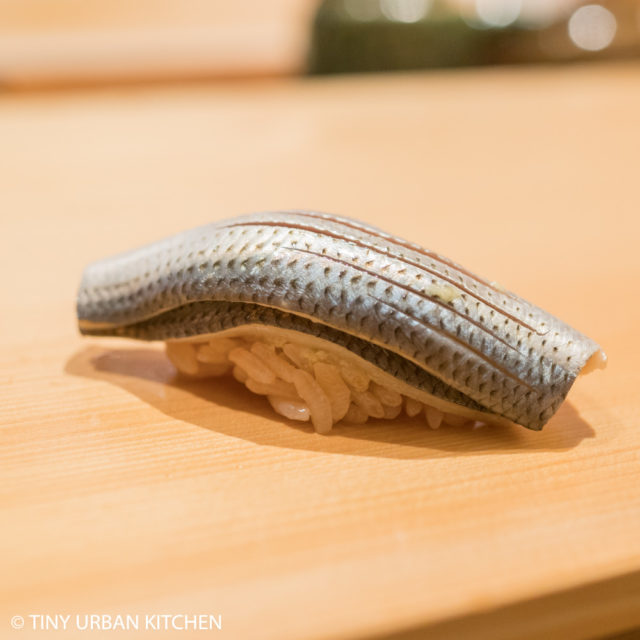
kohada 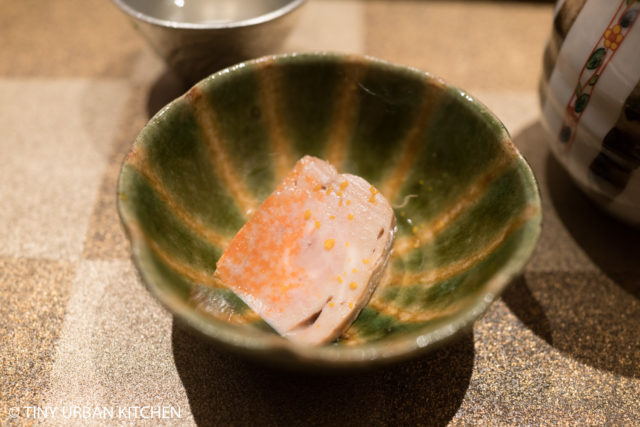
kawahagi (filefish) liver + shiso
The rice used at Sushi Masataka is from Yamagata, about two hours from Tokyo. The colder climate makes it ideal for growing rice certain fruits. As a result, the region is well known for its rice, sake, and fruit.
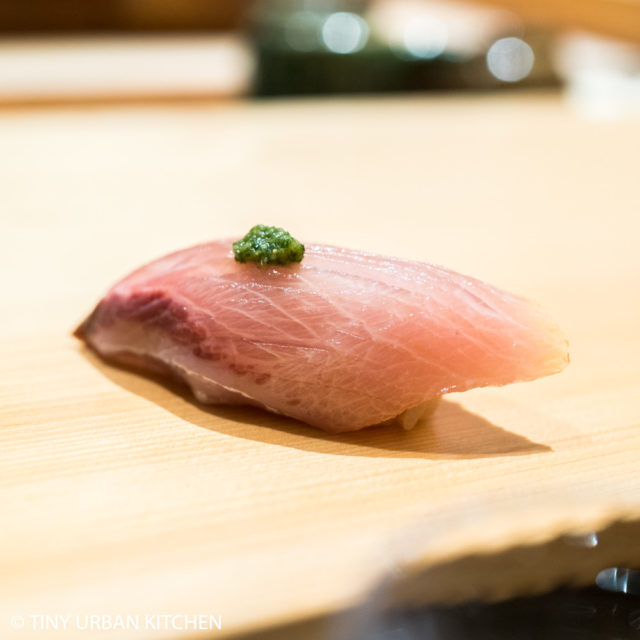
buri 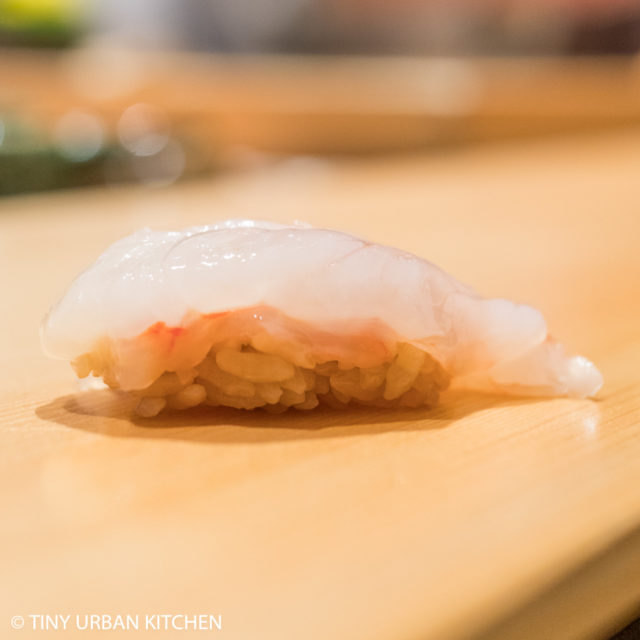
raw shrimp (ebi) 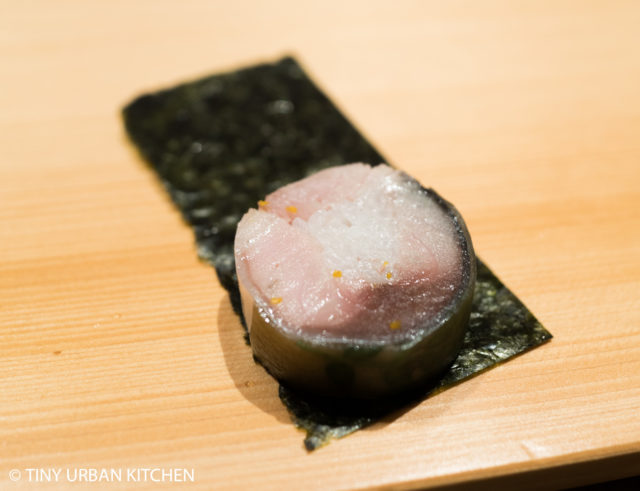
saba (mackerel),
sansho pepper leaf, nori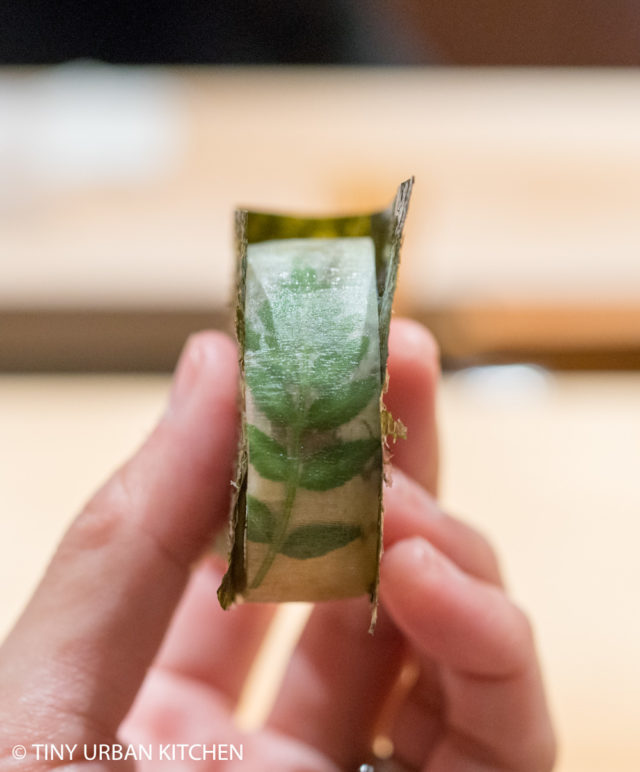
gorgeous sansho pepper leaf 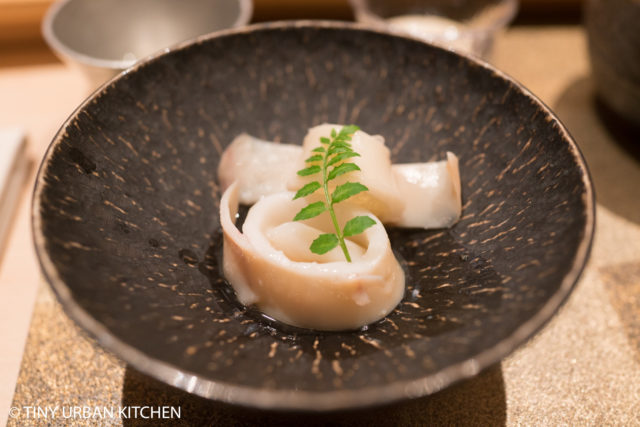
squid with squid roe (seasonal)
Fish is flown in from Tokyo and virtually all ingredients are imported from various places in Japan. The quality of the sushi was excellent, and we really enjoyed the many different creative touches that Chef Masataka put into the different dishes.
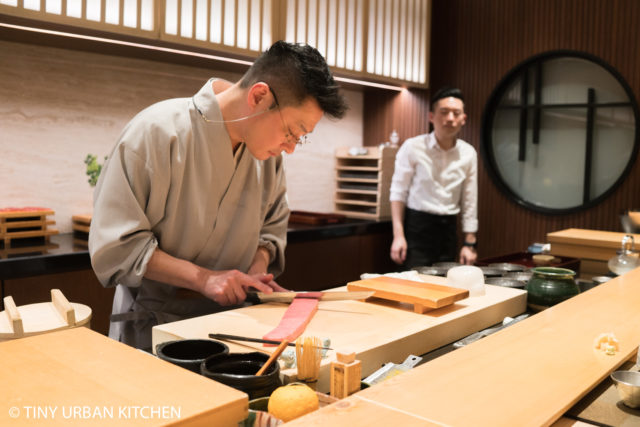
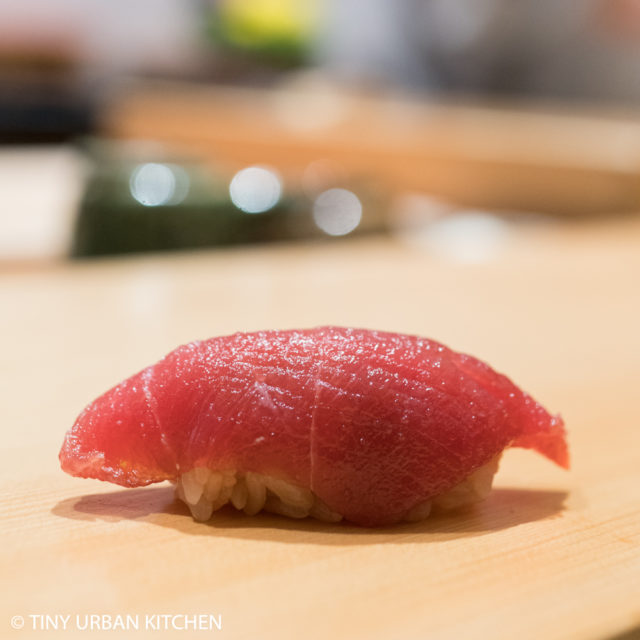
tsuke - maguro 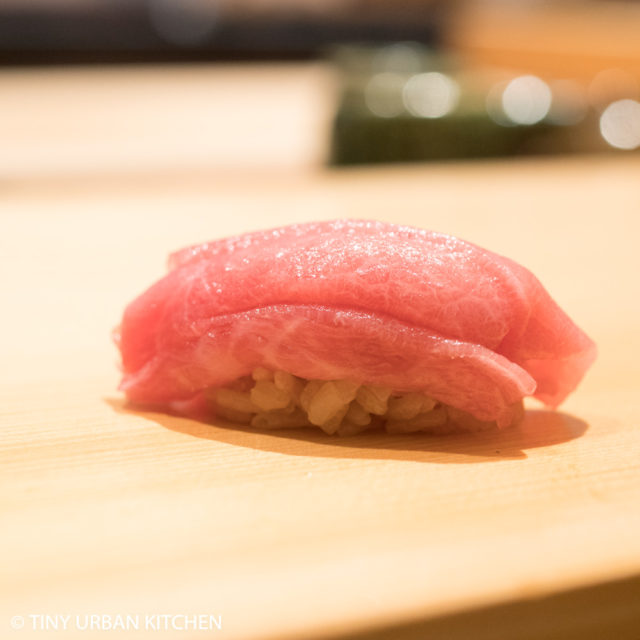
5-layer toro sushi)
One signature item at Sushi Masataka is his multi-layered toro roll. Chef Masataka thinks that otoro is too fatty to eat by itself, and therefore he makes a unique version that consists of five layers: chutoro - chutoro - otoro - otoro - chutoro.
Tsuke-maguro (tuna) is topped with a light dusting of yuzu zest.

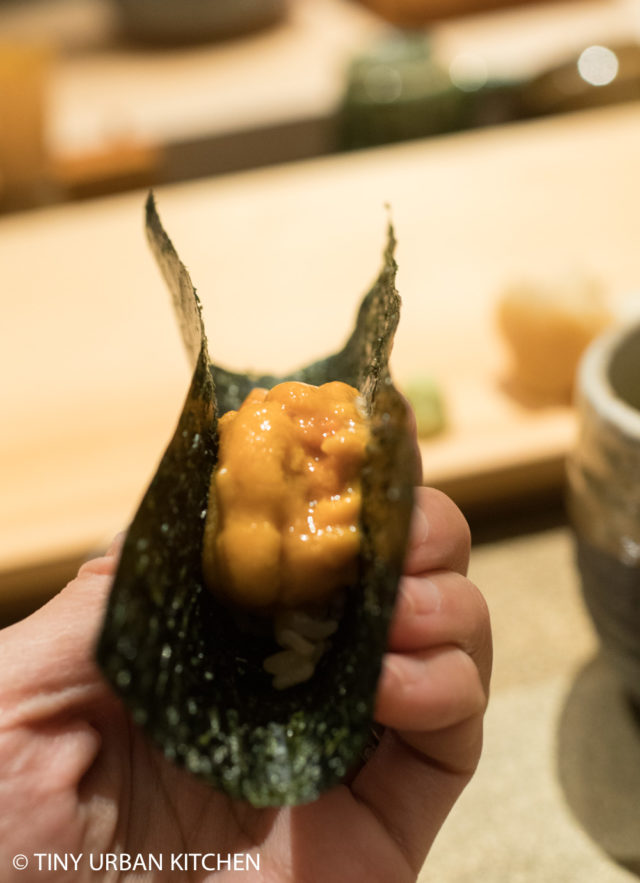
Hokkaido uni
Near the end of the meal, the sequence began to resemble a traditional Edomae meal again, ending with classics such as creamy uni from Hokkaido, a negitoro roll, anago, tamago, and miso soup.
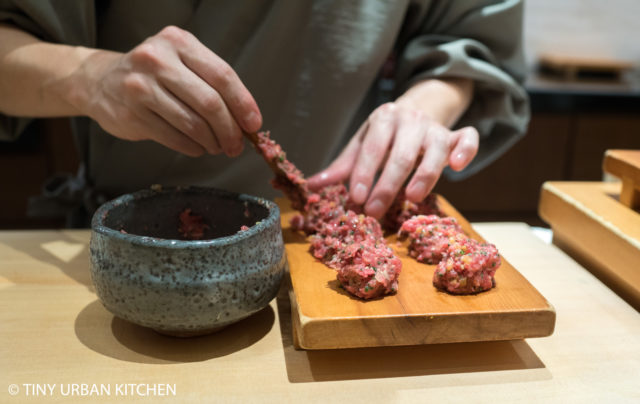
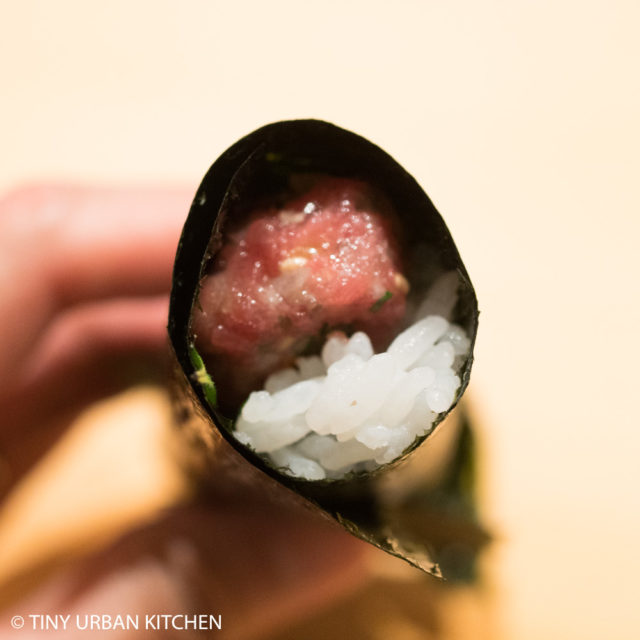
negitoro roll 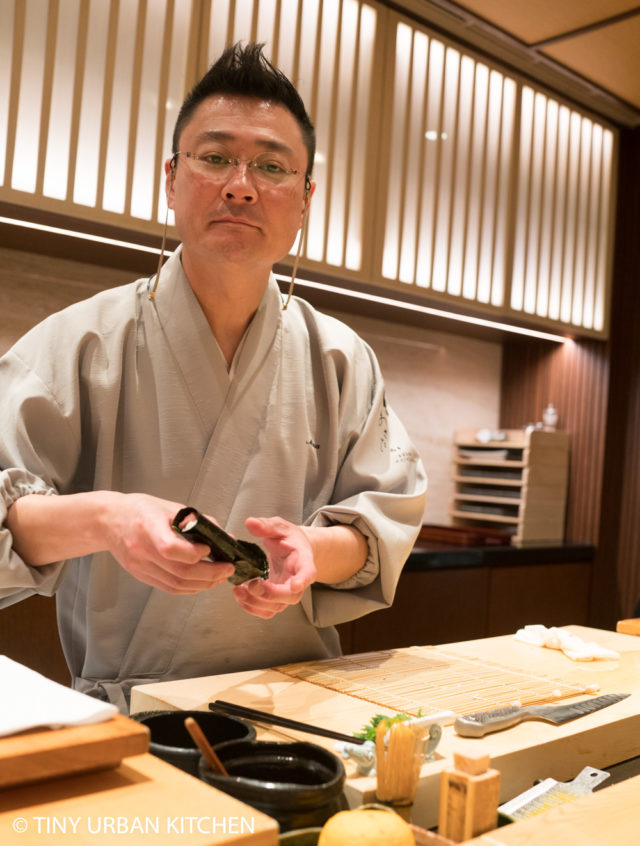
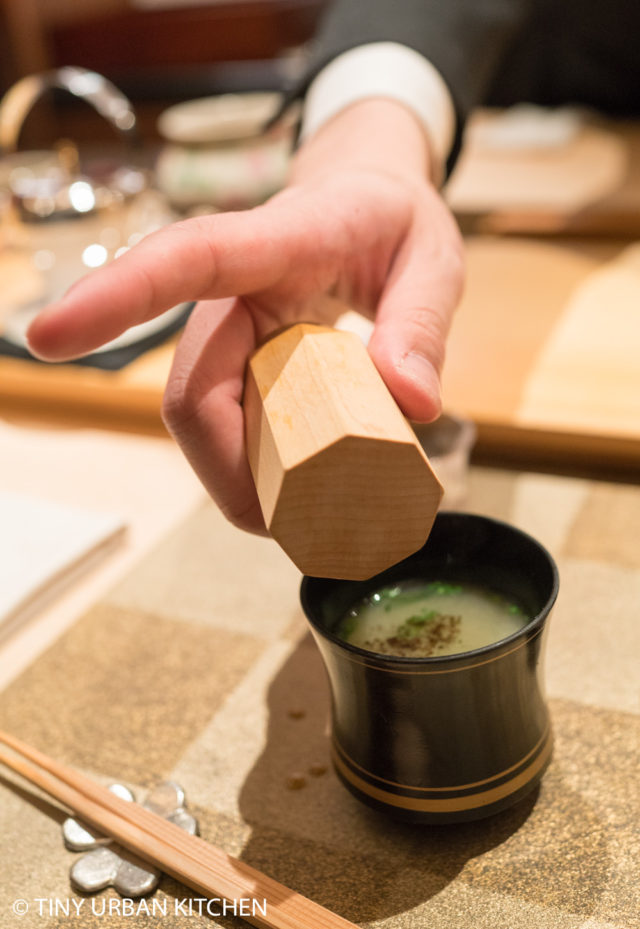
miso 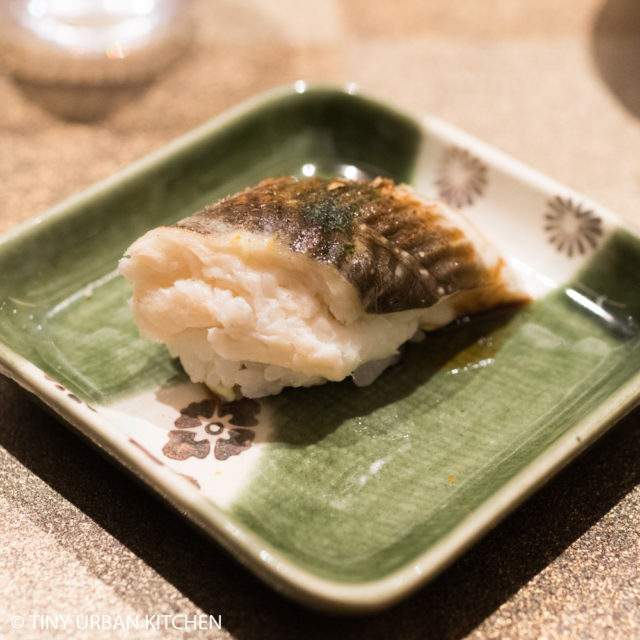
anago (eel) 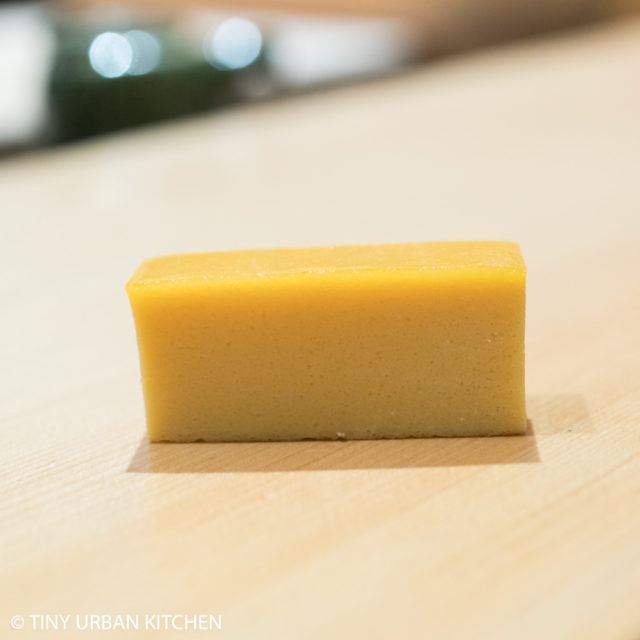
tamago (egg) 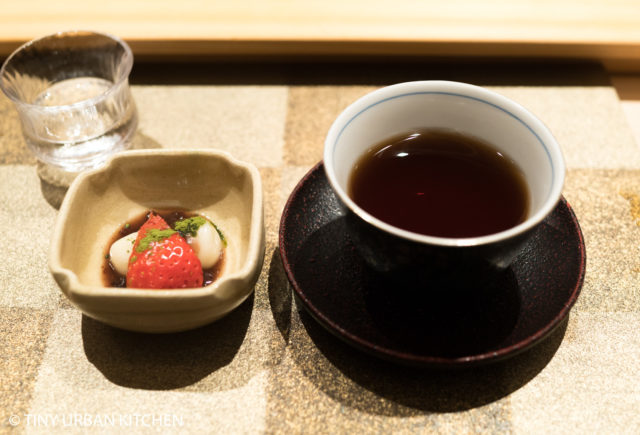
mochi + strawberry and hojicha tea
General Thoughts - Sushi Masataka Hong Kong
We loved our meal at Sushi Masataka. Sometimes we still have to pinch ourselves to believe that we can really walk just a few steps to access some of the best food in the world.
The sushi and sashimi are excellent. The appetizers sprinkled throughout the meal showcase Chef Masataka's respect and understanding of the Edomae traditional while also demonstrating his willingness to add his own flair. Ingredients are top notch, and overall execution is great.
The ambiance is quiet and serious, not unlike a typical high-end sushi bar in Japan. The clientele were mixed, with English, Cantonese, and Mandarin speaking customers. (It was entertaining to watch the staff describe the various fish in different languages to the different groups.) The restaurant only offers dinner, with two seatings per night. Chef Masataka speaks a small amount of English, but did not chat with us too much during the dinner.
The only options on the menu are two omakase prix fixe meals: a 14 course one for ~ HK$2,080 and an 18 course one for ~ HK$2,980, not including drinks or service charge. The restaurant typically does not open for lunch, although the Michelin Guide states that lunch can be made by reservation if there is a minimum of 4 people (similar to Sushi Shikon).
It's definitely not an everyday type of restaurant, but it's a great place to go if you want to treat special guests or celebrate a big event!
Sushi Masataka Hong Kong
G/F 18 Wood Road Wan Chai
Related Posts
Sushi Nakamoto
Sushi Saito Hong Kong
Sushi Shikon
HAKU Hong Kong
8 ½ Otto and Mezzo












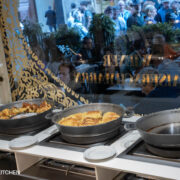
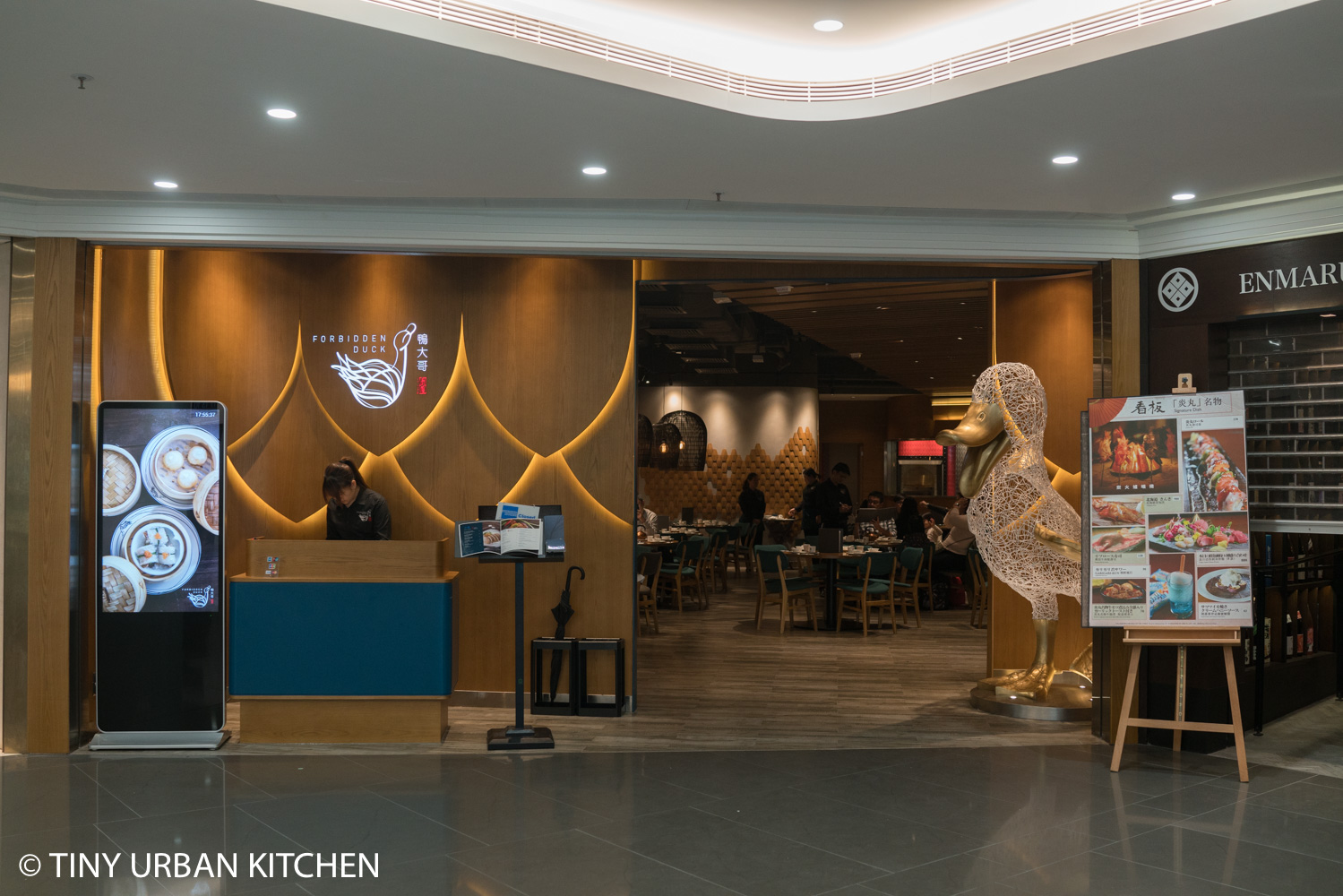
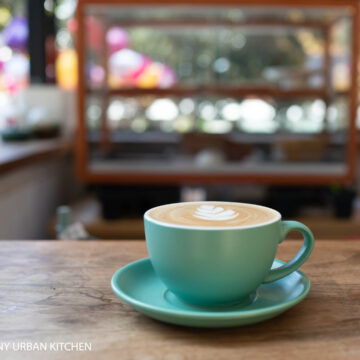
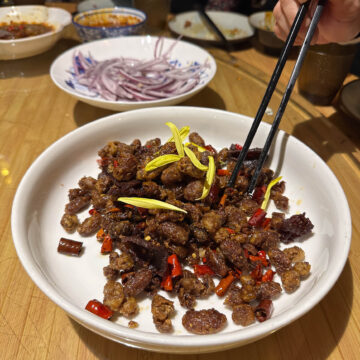
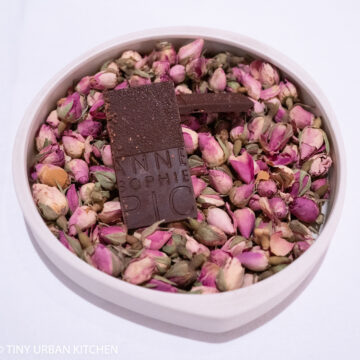
[…] PostsHAKU Hong Kong – first visitSushi Masataka Hong KongSushi Nakamoto Hong KongIM Teppanyaki Hong KongICHU Peruvian Hong KongDos Palillos – Japanese […]